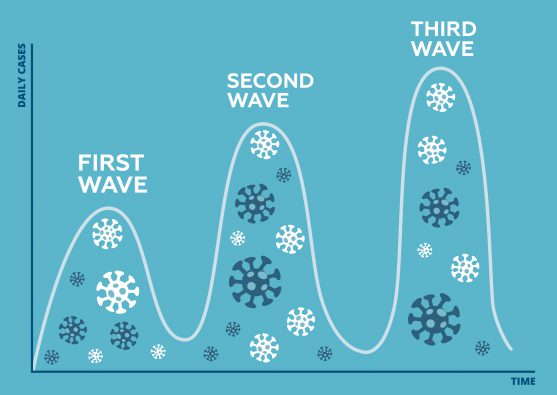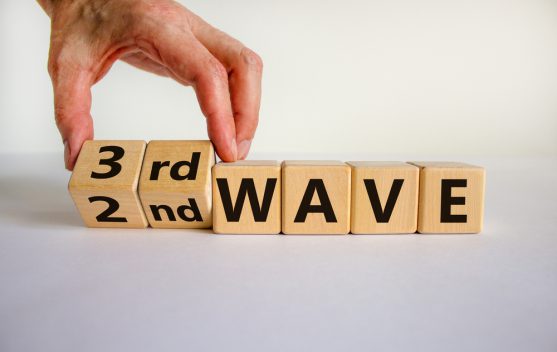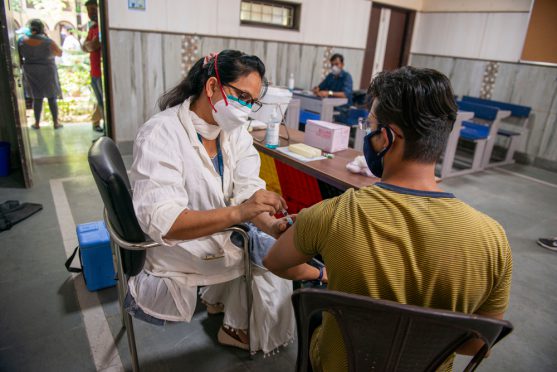With the second wave of COVID-19 now on a downward slope, Indians are speculating if there will be a third wave.
The first two waves having caused immeasurable loss of life and finances to millions of Indians, even the mention of an impending third wave is unbearable to many.
Here we look at the probability of a third wave and how you can prepare for it.
What is a third wave?
‘Wave’ refers to the rise and fall in the number of people infected by COVID-19. When marked on a graph, the data resembles a wave.

Between 2020 and 2021, there were two distinct waves of COVID-19 in India. Presently, the number of active cases, as well as the number of deaths due to COVID are on a declining trend. Based on this, it is expected that in July 2021 the number of cases will be similar to what it was in February 2020.
If there is a rise in cases after July 2021, then it will be called the third wave.
Will there be new strains of the COVID virus?
The Delta variant of SARS-CoV-2 had caused the second wave. Now, a Delta Plus variant has been identified. The B.1.617 variant and its lineage B.1.617.2 were primarily responsible for the surge in Covid-19 cases with high transmissibility of 50 per cent more than the Alpha variant (B.1.1.7).
Generally speaking, when a virus mutates into a newer strain, it’s ability to thrive improves. This could be a cause for concern.

Will there be a third wave?
Since a majority of our population has still not been vaccinated, a third wave might occur unless we take strict measures to prevent it.

Here’s what needs to be done to prevent a third wave:
- Crowding needs to be avoided both indoors and outdoors.
- All measures of social distancing and sanitisation need to be continued.
- Face masks should continue to be mandatory in all public places. Face masks should be worn correctly.
- Work from home should continue for professions where it is feasible.
- Staggered timing should be enforced for workplaces where work from home is not feasible.
- Strict measures of testing and tracking have to be maintained to spot and contain infection within a zone. Fresh cases should be contact traced and isolated.
- If a zone crosses the 5% positivity ratio then it should be placed under isolation.
- Since vaccination is the only defence we currently have against COVID-19, vaccination drives will be pivotal in prevention of further waves.
- Genome sequencing helps us identify newer strains of the virus as early as possible so as to prepare for an outbreak.
A third wave is likely to occur, but it is not unpreventable.
It is difficult to predict when the third wave will occur or how dangerous it will be.
Will the third wave affect more children?
It is popularly believed that the third wave will affect children more than adults. According to AIIMS Director Dr Randeep Guleria this cannot be confirmed as a fact.
There is no evidence that children will be most affected by the third wave, or that they will have more serious infections than they have had in the previous two waves. So far, children have been the demographic group least affected by the COVID-19 virus and there is not evidence that this will change.
To know more about the different COVID-19 vaccines, click here.
